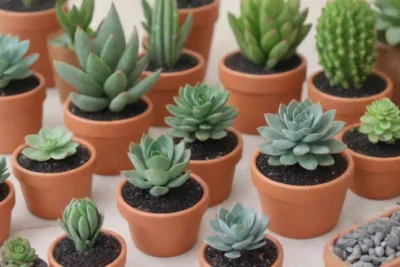
Planting Succulents: The Right Way to Arrange Your Terrarium
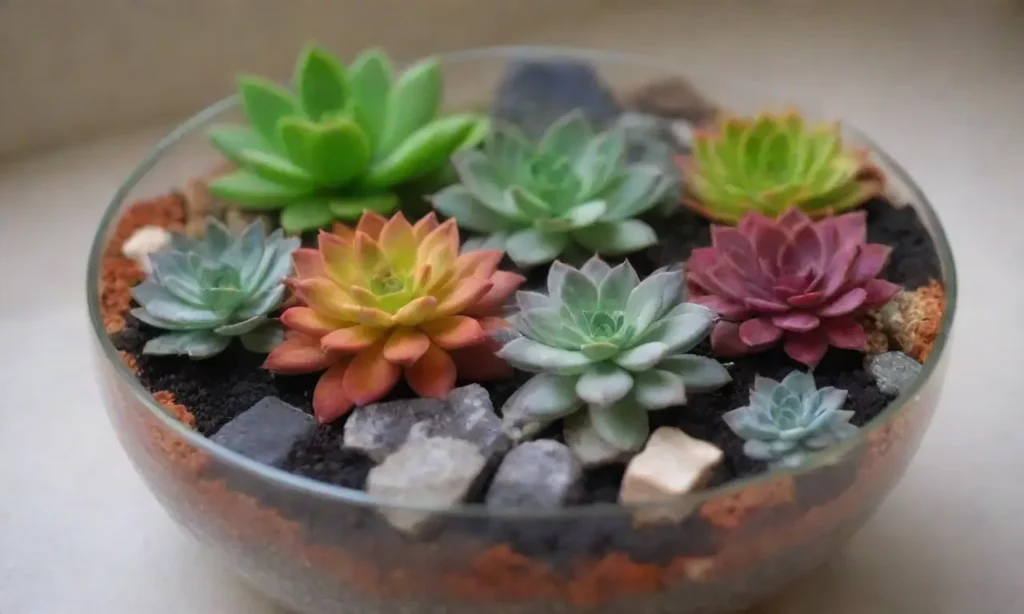
Introduction
Succulents have gained immense popularity in recent years as a beautiful and low-maintenance option for both indoor and outdoor gardening. With their unique textures and diverse colors, these plants can bring a touch of nature into your living space while requiring minimal care. What makes succulents particularly appealing is their adaptability; they can thrive in various conditions and are suitable for terrarium setups. In this article, we shall delve into the essentials of planting succulents, specifically focusing on creating an aesthetically pleasing and well-arranged terrarium.
Creating a terrarium is an excellent way to showcase your succulent collection while learning about their care and requirements. However, arranging these plants in a terrarium isn’t just about placing them in a glass container; it involves understanding their innate characteristics, needs, and the overall design principles. This article will guide you step-by-step on how to select the right succulents, the necessary materials, and the techniques to arrange them effectively, thus ensuring a thriving and visually appealing terrarium.
Choosing the Right Container
The first step in creating the perfect succulent terrarium is selecting an appropriate container. When choosing a glass terrarium, consider the following factors: size, shape, and drainage.
Size and Shape
The size of your container will largely depend on the number and types of succulents you wish to plant. A larger terrarium can house multiple plants while creating an eye-catching display, but it’s essential to leave enough space for each succulent to grow without crowding. Conversely, if you opt for a smaller container, consider using smaller varieties of succulents, like Haworthia or Echeveria.
Shape also plays a crucial role in aesthetics and plant placement. A tall cylindrical container allows for gravel and soil layers to be stacked, providing visual depth. A wide, shallow bowl, on the other hand, is ideal for arranging a landscape-style terrarium, where plants can be grouped together to mimic their natural habitat. Material-wise, glass is preferred for visibility and ease of cleaning; however, ensure it is suitable for planting.
Drainage
Another critical aspect to consider is drainage. Unlike standard houseplants, succulents prefer well-draining soil to prevent water retention, which can lead to root rot. Choose containers that facilitate drainage effectively; this can involve selecting terrariums with built-in drainage holes or using a method that allows excess moisture to escape. If your container doesn’t feature drainage holes, consider creating a drainage layer with materials such as pebbles, gravel, or activated charcoal at the bottom. This layer will aid in keeping the soil dry and preventing over-saturation.
Light Exposure
Finally, the placement of your terrarium plays a role in the plants’ health. Most succulents love bright, indirect sunlight. Therefore, selecting a location for your terrarium that receives ample light but not harsh direct sunlight is crucial. Keep in mind that some succulents may require less light than others, so understanding each type’s light preference is essential for their long-term health.
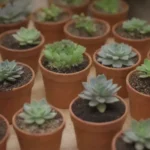 How to Host a Succulent Terrarium Workshop at Home
How to Host a Succulent Terrarium Workshop at HomeSelecting Your Succulents
With a suitable container chosen, it is now time to select the succulents that you will feature in your terrarium. With an overwhelming variety available today, here are several crucial factors to consider while making your selection.
Types of Succulents
When selecting succulents, it is vital to consider the diversity of plant types to create a visually appealing arrangement. You may want to mix different textures and colors to add depth. Popular options include:
- Echeveria: Known for their rosette shape and stunning variety of colors, these succulents thrive in bright sunlight.
- Aloe Vera: Not only is Aloe active in air purification, but its unique leaves can also add an architectural element to your terrarium.
- Jade Plant: As a popular houseplant, its attractive foliage and symbolism of luck make it a great terrarium choice.
- Sedum: An excellent ground cover option, Sedum plants can spread out and provide a blanket of green in your terrarium.
- Haworthia: A smaller plant with striking stripes and patterns, Haworthia can fit snugly into smaller containers or fill out spaces effectively.
Compatibility
In addition to aesthetics, ensure that the selected succulents are compatible in terms of their growth requirements. For instance, some succulents love a drier environment, while others may require a bit more moisture. Avoid mixing succulents that have vastly different watering needs as this could result in unhealthy plants. Typically, group similar plants together based on their light, water, and soil preferences.
Sourcing Succulents
When sourcing your succulents, there are various options available. Local nurseries often offer a diverse selection, and choosing healthy, robust plants is essential. Inspect for any signs of disease or pests—healthy succulents should have firm leaves free from brown spots or discolorations. Alternatively, consider purchasing plants online; there are numerous reputable nurseries that specialize in succulents. Whichever method you choose, always choose quality plants to ensure that your terrarium thrives.
Preparing the Terrarium
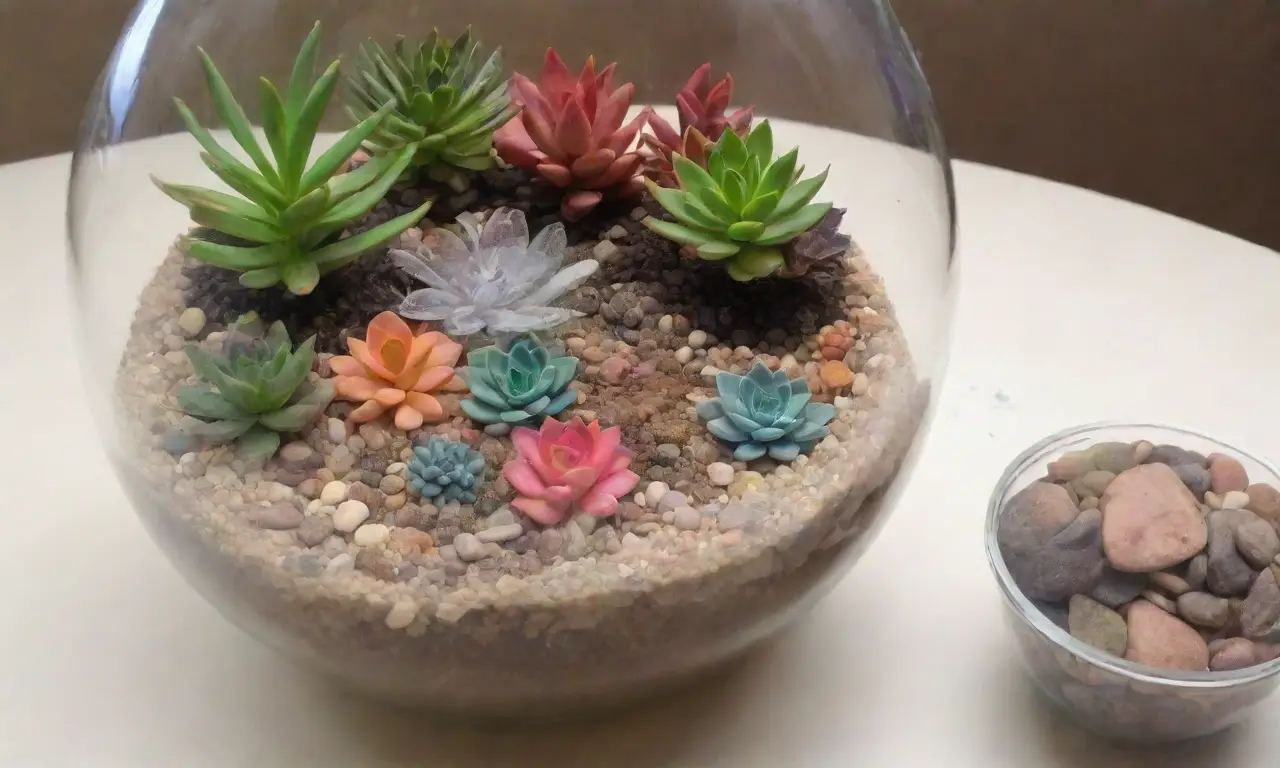
Once you have chosen your container and succulents, it’s time to prepare your terrarium. This involves gathering your materials and creating a suitable environment for your plants.
Materials Needed
To begin, gather all the necessary materials. You will need:
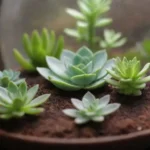 Creating a Closed Terrarium: The Science Behind Succulents
Creating a Closed Terrarium: The Science Behind Succulents- A glass terrarium container
- Pebbles or gravel (for drainage)
- Activated charcoal (to keep the environment fresh)
- Potting soil (designed for cacti or succulents)
- Succulents of your choice
- Tools like long tweezers or chopsticks for placement
- Decorative elements (if desired, such as rocks or figurines)
These items will not only complete your terrarium but also help maintain an environment conducive to succulent growth.
Filling the Container
Start by adding a layer of pebbles or gravel to the bottom of your terrarium, about an inch or so deep. Following this layer, sprinkle a thin layer of activated charcoal. This layer helps in filtering excess moisture and keeping the soil fresh. Afterward, add a medium layer of suitable potting soil.
When adding the soil, make sure to leave enough space for your succulents' roots. A good rule of thumb is to create a small hole in the center for planting your largest succulent first, gradually filling in around it with your other selections.
Planting Tactics
When it’s time to add your succulents, gently remove them from their nursery pots and loosen any tightly bound roots. Use a tool like tweezers to carefully arrange them in the terrarium, considering the aesthetic layout. Aim for a natural, flowing design rather than an overly structured one.
Plant taller varieties towards the back and shorter ones towards the front, so all views of the terrarium are visually engaging. After placement, ensure the soil is gently packed around the base of the plants, providing support but not causing any stress to the roots. Finally, give your newly arranged succulents a light misting with water.
Care Tips for Your Succulent Terrarium
After creating your vibrant succulent terrarium, the next logical step is to focus on care. Proper maintenance ensures your terrarium remains a thriving ecosystem.
Watering Regimen
Understanding the watering needs of succulents is crucial for their survival. In a closed terrarium, humidity can create different moisture levels than in open ones. As a rule of thumb, water sparingly. Depending on your environment, you may only need to water your succulents every two to three weeks. Always ensure excess water has a way to drain—overwatering is one of the main causes of succulent demise.
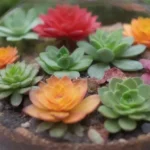 Seasonal Succulent Terrarium Ideas for Every Time of Year
Seasonal Succulent Terrarium Ideas for Every Time of YearMany succulent enthusiasts recommend using a spray bottle, as this method provides a fine mist that avoids saturation of the soil. Observe your plants; if their leaves appear wrinkled or shriveled, it might be time to hydrate. Conversely, if they look squishy or mushy, refrain from watering.
Light Conditions
As mentioned earlier, lighting is essential for thriving succulents. Assess the location where you have placed your terrarium. Ideally, it should receive bright, indirect sunlight. If you find that your succulents are stretching toward the light (etiolation), consider moving them closer to a light source to promote healthy growth. Always rotate your terrarium occasionally to ensure all sides of each plant receive adequate light.
Pruning and Fertilization
Over time, some succulents may outgrow your terrarium or experience growth issues. Regular pruning is an excellent way to keep your plants within limits. Remove any dead leaves or spent flowers to encourage new growth. As for fertilization, using a diluted liquid fertilizer formulated for succulents can be beneficial during the growing season—typically spring to early fall. Fertilize sparingly, as over-fertilizing can lead to leggy plants.
Conclusion
Creating a succulent terrarium is a rewarding venture for both novice and experienced gardeners. Understanding your container choices, selecting appropriate succulents, preparing your terrarium, and providing the right care are fundamental components in this process. Each step contributes not just to the beauty of your arrangement but also to the health and longevity of your plants.
As you embark on this miniature gardening journey, allow your creativity to shine through. Feel free to experiment with different succulents, container styles, and layouts. Each terrarium tells a unique story, reflecting your personal touch and aesthetic preferences.
By adhering to the tips and techniques outlined in this article, you can cultivate a beautiful, thriving environment for your succulents—one that not only beautifies your space but also fosters growth and vitality. Enjoy the process of nurturing these resilient plants, and take pride in a terrarium that blossoms under your care.
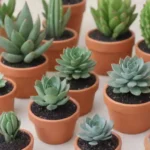 Creating an Indoor Garden: Succulent Terrariums for Your Home
Creating an Indoor Garden: Succulent Terrariums for Your HomeIf you want to read more articles similar to Planting Succulents: The Right Way to Arrange Your Terrarium, you can visit the Terrarium ideas category.

You Must Read